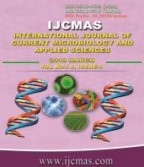


 National Academy of Agricultural Sciences (NAAS)
National Academy of Agricultural Sciences (NAAS)

|
PRINT ISSN : 2319-7692
Online ISSN : 2319-7706 Issues : 12 per year Publisher : Excellent Publishers Email : editorijcmas@gmail.com / submit@ijcmas.com Editor-in-chief: Dr.M.Prakash Index Copernicus ICV 2018: 95.39 NAAS RATING 2020: 5.38 |
Agricultural sustainability is the highest priority in developed and developing countries. This study aims in discussing the impacts and applications of geospatial information technology in agriculture and allied branches. These advanced technologies offer multi-scale benefits and they can be used to create and synthesize new low-cost information and documents. Quick data sources and integration methods provide diagnostic error detection and feedback to provide accurate input data for various agricultural production methods and pollution from diffuse sources, and prepare maps and charts that meet the specific needs. Geospatial technology provides direct information or production indicators (cultivated area and yield). Agricultural parameters such as soil moisture, soil type, cultivation stage, are essential for effective agricultural monitoring. Removing masks can be derived from multifunctional images. Cloaking is an essential requirement for satellite remote sensing for forecasting/estimating crops, useful for the transfer of precision farming. It involves the use of the allocation and management of spatial assets in order to distribute the time and money available, where it is most needed, and will provide the greatest return to the farmers.
 |
 |
 |
 |
 |